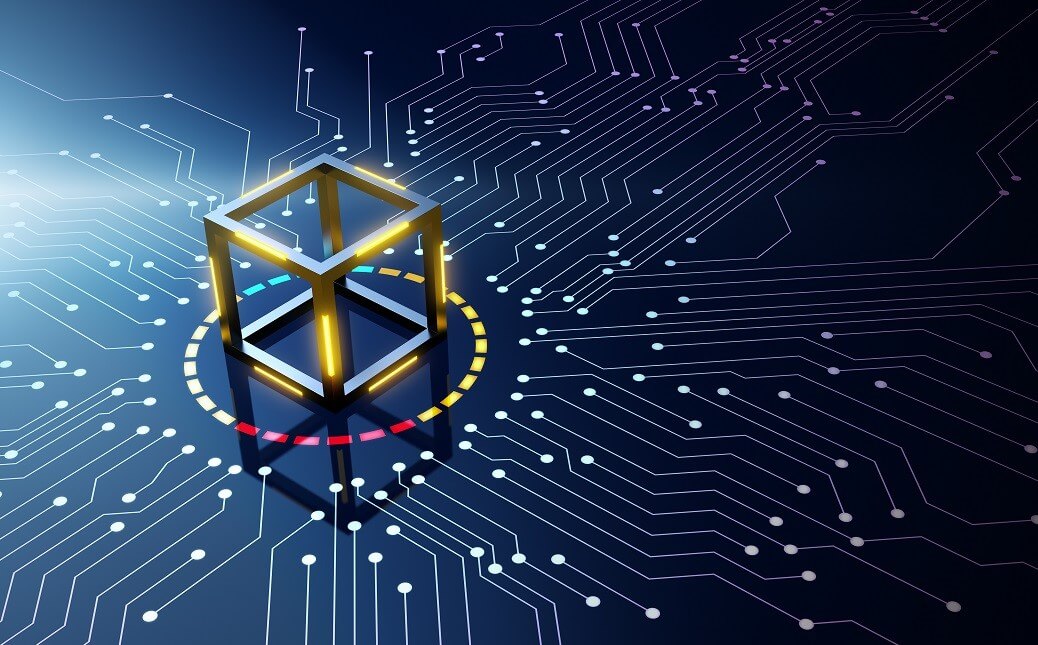In the ever-evolving world of cryptocurrency, node crypto is frequently mentioned. However, not everyone fully comprehends what a crypto node is or its role in the grand scheme. In its simplest form, a crypto node is a computer that hosts a copy of the blockchain. But there is more to it than meets the eye. In the world of cryptocurrencies, nodes play a crucial role in maintaining the security and integrity of the network. They are responsible for transaction verification, the creation of new blocks, and the overall maintenance of the blockchain. The concept of a crypto node is integral to the decentralized nature of cryptocurrencies. In a traditional banking system, transactions are verified by a single centralized authority. However, in the crypto world, this responsibility is distributed among numerous nodes spread across the globe. This decentralization makes the system more secure, transparent, and resistant to fraud. PlasBit understands that the intricacies of crypto nodes can be daunting, especially for beginners in the crypto space. However, knowing how these nodes function and their importance in the blockchain ecosystem can significantly enhance your crypto experience.
Understanding the Functionality of Crypto Nodes
At its core, a crypto node is a point of intersection within a network that maintains a copy of the blockchain and verifies all transactions. Each node in the network follows a set of rules defined by the cryptocurrency protocol. These rules are essential in maintaining uniformity and ensuring all nodes are in sync. Crypto nodes communicate with each other to share information about transactions and blocks. When a new transaction occurs, it is broadcast to all nodes. Each node then verifies the transaction against the rules set by the protocol. If the transaction is valid, it is added to the pool of unconfirmed transactions destined to be included in the next block. Node crypto also plays a crucial role in the creation of new blocks. When a block is mined, it is broadcast to all nodes. Each node then verifies the block and, if valid, adds it to its copy of the blockchain. This process ensures that all nodes have an identical copy of the blockchain, maintaining the integrity and security of the network. For example, this very security underpins the ultimate value of the crypto you keep in your crypto wallet, and it is central to your understanding of how blockchain works.
Importance of Node Crypto in Blockchain
Crypto nodes are the backbone of any blockchain network. They are crucial in maintaining the system's decentralization, security, and transparency. The decentralized nature of a blockchain network is achieved through its nodes. Since each node holds a copy of the blockchain, it ensures that no single entity has complete control over the network. This decentralization makes the system highly resistant to censorship and fraud. Crypto nodes also play a vital role in enhancing the network's security. They verify each transaction and block, ensuring that they adhere to the rules of the protocol. This verification process prevents double spending and other fraudulent activities. Moreover, since each node maintains a copy of the blockchain, it ensures the data is secure and cannot be tampered with. In addition to security and decentralization, node crypto also enhances the transparency of the network. Since multiple nodes verify all transactions, it ensures that all transactions are transparent and can be audited by anyone. Our view at PlasBit is that this transparency builds trust among users and increases the system's reliability.
How Crypto Nodes Enhance Security?
A key area of PlasBit's focus is security, and one of the primary roles of node crypto is to enhance the network's security. Crypto nodes achieve this in a variety of ways. First, they verify each transaction and block against a set of rules defined by the protocol. This verification process ensures that all transactions are valid and prevents fraudulent activities such as double-spending. Secondly, crypto nodes maintain a copy of the blockchain. This feature means that even if a single node is compromised, the data in the blockchain remains secure. The decentralized nature of the network ensures that the data is distributed across numerous nodes, making it practically impossible for a malicious actor to alter the data. Furthermore, the process of consensus in a blockchain network also enhances security. Consensus algorithms require the agreement of the majority of nodes to validate a transaction or add a new block to the blockchain. This process ensures that even if a few nodes are compromised, they cannot manipulate the system.

Types of Crypto Nodes
In crypto nodes, there are primarily two types: full nodes and lightweight or Simplified Payment Verification (SPV) nodes. Full nodes download the whole blockchain, verify all transactions and blocks, and enforce the rules of the protocol. They are the most secure and private node type but require significant storage space and computational power. On the other hand, lightweight nodes download only a partial section of the blockchain and rely on full nodes for transaction verification. They are less secure and private than full nodes but require less storage space and computational power, making them more accessible for everyday users. Another type of node that is gaining popularity is the master node. Master nodes perform the same functions as full nodes but provide additional services such as instant and private transactions. In return for these services, master nodes receive a portion of the block reward.
Practical Usage of Node Crypto
While understanding the functionality of crypto nodes is crucial, knowing how to use them effectively can significantly enhance your crypto experience. Crypto nodes can be utilized for various purposes, such as validating transactions, mining new blocks, and even earning rewards to accumulate in your PlasBit crypto wallet. One of the primary uses of node crypto is to validate transactions. By running a node, you can participate in the verification process and contribute to the security and integrity of the network. Moreover, as a node operator, you can choose which transactions to include in the blocks you mine. This ability gives you a certain degree of control over the transactions confirmed in the network. Crypto nodes can also be used for mining new blocks. By dedicating computational power, you can participate in the mining process and earn rewards in the form of cryptocurrency. This operation can be a lucrative venture, especially with cryptocurrencies with high market value. Moreover, some cryptocurrencies offer rewards to nodes for maintaining the network. These rewards can be in the form of transaction fees or newly minted coins. Running a node can thus be a profitable venture, in addition to contributing to the security and integrity of the network.
Setting Up Your Crypto Node
Establishing your node crypto setup can be a rewarding experience in terms of contributing to the network and potential monetary gains. However, it requires a certain level of technical knowledge and resources. At PlasBit, we have summarised the steps that you would need to consider:
1. Choosing the proper hardware:
The first step in setting up a node is selecting the correct hardware. The requirements vary depending on the type of node and the cryptocurrency. Full nodes require a powerful computer with a large storage capacity to store the entire blockchain. Lightweight nodes, on the other hand, can be run on less powerful devices.
2. Downloading the software:
The next step is downloading the appropriate software. Each cryptocurrency has its own software that needs to be downloaded and installed. This software enables your computer to communicate and participate in the network with other nodes.
3. Configuring the node:
After installing the software, the node needs to be configured. This process involves setting up the node crypto to follow the rules of the protocol, defining the services it will provide, and connecting it to the network.
4. Maintaining the mode:
Once the node is set up, it needs to be maintained. This activity includes regularly updating the software, ensuring the node is always online, and monitoring its performance.
Common Challenges in Navigating Crypto Nodes and Solutions
Navigating the world of crypto nodes can be a daunting task. One of the common challenges is the technical knowledge required to set up and maintain a node. However, this can be overcome by learning and educating oneself about the technology. Numerous online resources provide detailed guides and tutorials on setting up and maintaining crypto nodes. Another challenge is the resource requirements. Running a full node requires a powerful computer with a large storage capacity. This requirement can be a barrier for many people. However, one can opt for lightweight nodes, which require fewer resources, or even cloud-based nodes. Security is also a significant concern for node crypto operation. Hackers and malicious actors can target nodes. Implementing robust security measures to combat this problem, such as using secure networks, keeping the node software updated, and regularly monitoring the node crypto for any suspicious activities, is essential.
Case Study: Amin's Journey of Setting Up His Own Bitcoin Crypto Node
Amin, an ambitious cryptocurrency enthusiast who regularly uses a crypto debit card, decided to further his engagement with the Bitcoin network by setting up his own Bitcoin crypto node. Amin believed in the power of decentralization and yearned to contribute to the network's robustness while gaining more profound knowledge about the technology. Amin started his journey by educating himself about the requirements for setting up a Bitcoin node. He learned he would need a computer with at least 200GB of free disk space, a stable internet connection, and about 6GB of memory. Fortunately, Amin, who has a computer science background, already had a machine that met most of these requirements. He ordered and paid for the extra hardware he needed via wire transfer from his PlasBit account. The primary challenge for Amin was understanding the complex process of setting up the node. He studied various online resources, including technical guides, forums, and video tutorials. Amin also reached out to the Bitcoin node community for advice and support. The interactions with the community were beneficial and motivating to him. Amin decided to use Bitcoin Core, the reference client for Bitcoin, to set up his node. He downloaded the software and started syncing his node with the current blockchain. This process took several days due to the large size of the Bitcoin blockchain, which was over 300GB at the time. Amin had to constantly monitor the process, ensuring his internet connection remained stable and his computer did not shut down unexpectedly. After successfully syncing his Bitcoin node, Amin felt a sense of accomplishment. He was now a part of the Bitcoin network, helping to validate transactions and blocks and contributing to the network's decentralization. Amin's node also allowed him to verify crypto transactions without relying on a third party, enhancing his financial sovereignty. Amin's journey was not without challenges but he overcame them through his perseverance and passion for Bitcoin. His experience underscores the importance of community support and self-education in cryptocurrency. Amin's node crypto operation is now a small but integral part of the Bitcoin network, and he continues to explore ways to contribute to the development and strengthening of the Bitcoin ecosystem. Amin's case highlights the technical requirements, challenges, and rewards of setting up a Bitcoin crypto node. While it requires technical knowledge, commitment, and patience, Amin's journey shows that anyone with the necessary resources and a passion for Bitcoin can contribute to the network's decentralization and robustness.
The Future of Crypto Nodes
The future of crypto nodes looks promising. With the increasing popularity of crypto and blockchain technology, the role of nodes is set to become even more crucial. Nodes will continue to be the backbone of any blockchain network, ensuring its security, decentralization, and transparency. Developing new types of nodes, such as master nodes, also opens up new possibilities. These nodes provide additional services and potentially enhance the network's functionality and security further. Moreover, as more people become aware of the importance of node crypto setups and operations, we can expect an increase in the number of nodes. This growth will further strengthen the network and make it more robust.
Node Crypto Functionality: Contributing to Network Security
Navigating the world of crypto nodes can be a complex task, but the rewards are well worth the effort. Crypto nodes are the heart of any blockchain network, playing a vital role in maintaining its security, decentralization, and transparency. By understanding the functionality of crypto nodes, their importance in the blockchain, and how to effectively use them, we can enhance our crypto experience and contribute to the growth and security of the network. Whether you are a seasoned crypto enthusiast or a novice, node crypto exploration is a fundamental aspect of the crypto world that you cannot ignore.







